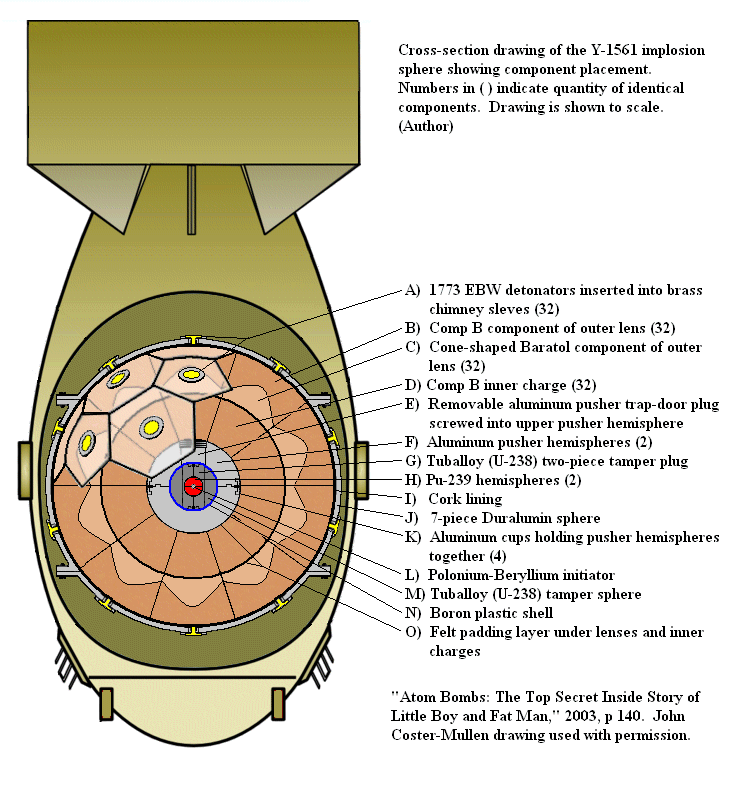After the successful test of a plutonium implosion device in July of 1945 at the Trinity site near Alamogordo, New Mexico, the Manhattan Project proceeded with the design and construction of a plutonium bomb to be used as a weapon. The code name for the device was “Fat Man”, homage to one of the characters in the movie “The Maltese Falcon.” The name came to be used for the whole class of nuclear bombs based on the same design.
The original Fat Man bomb was about ten feet long and about five feet in diameter. It weighed over ten thousand pounds. As with the Gadget, the device tested at Trinity, a subcritical sphere of plutonium was surrounded by both fast and slow explosives. When the explosives were triggered, they would compress the plutonium into a supercritical mass which would then explode in a nuclear blast of enormous power.
The bomb was designed so that the plutonium pit could be inserted as late as possible. A Duralumin sphere of about one and one half feet was constructed with a hole left to insert the pit. Inside the aluminum sphere was a nine inch sphere of U-238 with a thin boron shell. The U-238 sphere had a five inch cylindrical hole running through it. When it was time to arm the bomb, a cylinder of U-238 with a three and one half inch sphere of plutonium was inserted into the spherical assembly. At the center of the plutonium sphere was a polonium-beryllium initiator that would give off a burst of neutrons when triggered. An outer shell of specially shaped charges of fast conventional explosives surrounded an inner shell of slow conventional explosives which contained the Duralumin sphere. On the outside of the shell of charges were arranged detonators in a precise configuration. The charges had to be triggered in just the right way to compress the plutonium correctly.
The completed bomb was housed in a steel container that also contained four contact fuzes in the nose. This type of fuse triggers the bomb when it hits a hard solid surface. There was also a radar altimeter, batteries to power the detonators for the conventional explosives, baroswitches that trigger based on air pressure and timers. The whole assembly was to be housed in a steel teardrop shaped container that had a boxy tail piece to assure that the bomb would fall nose down when released. In August of 1945, all the components were sent to Tinian Island in the South Pacific and assemble for deployment.
This was the third nuclear bomb to be constructed and the second bomb to be used in warfare. Later generations of bombs were based on the Fat Man design with additional features to make them more reliable, safer, more efficient, etc. When the Soviet Union built and tested its first nuclear bomb on August 29, 1949, the design was based on the plans for the Fat Man bomb which had been stolen by spies from the United States.
